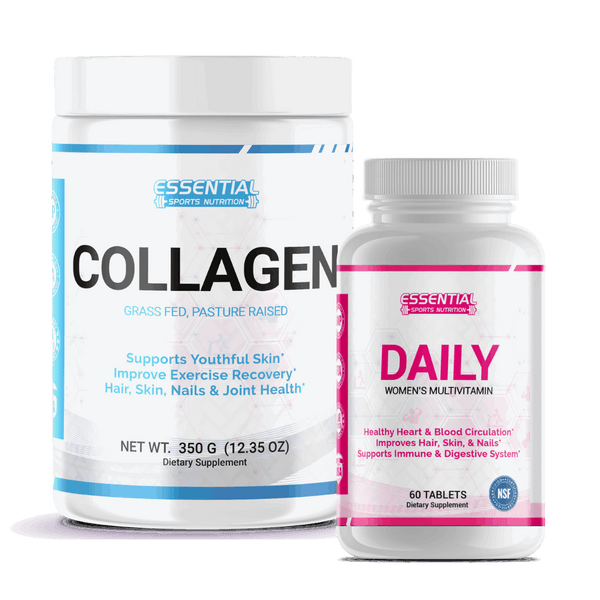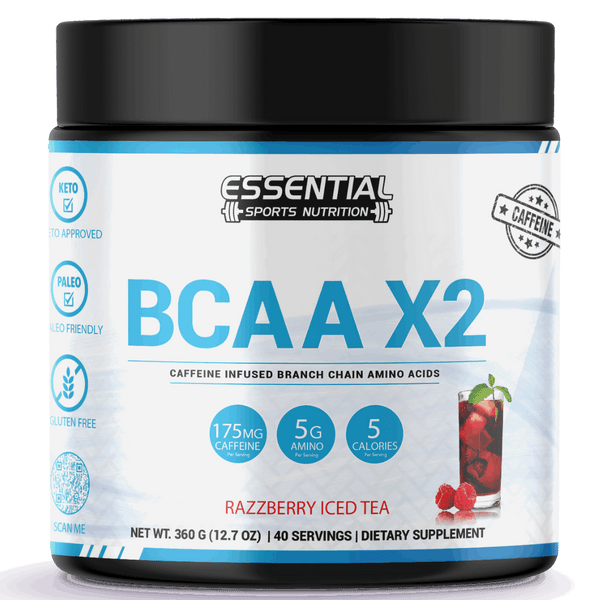Get to Know Your Back Muscles: Anatomy, Function, & Strengthening
Have you ever felt pain in your back after a long day of sitting or lifting heavy objects? You're not alone. Many people experience back discomfort due to weak muscles in that area.
An interesting fact is that our backs are made up of more than one or two muscles. Multiple groups work together to keep us standing tall and moving freely.
This article breaks down the complex world of back muscles into easy-to-understand parts. We'll explore key muscle groups like the latissimus dorsi, trapezius, and erector spinae, explaining where they are and what they do.
By learning about each back muscle, you can better understand how to strengthen it for better posture and less pain.

Key Takeaways
- Our back has important muscles, such as the latissimus dorsi, trapezius, rhomboids, posterior deltoids, and erector spinae. These muscles help us move and stand up straight.
- Exercises such as bent-over barbell rows, deadlifts, back extensions, seated cable rows, and pull-ups can strengthen our back muscles.
- Keeping these muscles strong is key for good posture and preventing pain. We should do specific exercises to build muscle strength in our backs.
- Back muscle problems can cause pain and stiffness. Early attention to symptoms helps avoid more serious issues.
- A healthy lifestyle that includes exercise and proper body mechanics plays a big role in keeping our back muscles fit.
Understanding Back Muscles
Back muscles play a big role in how we move every day. They help us stand up, lift things, and keep our balance.
Latissimus Dorsi
The latissimus dorsi is the largest muscle in the upper body. It spreads across almost the whole surface of your back, making it your widest muscle. This muscle starts from lower parts like your spine and pelvis and reaches up to connect to your humerus - that’s your upper arm bone.
Its main job is moving your shoulders and giving power to movements involving pushing, pulling, and lifting.
This big back muscle gets its commands from the thoracodorsal nerve, which helps it do its work properly. The latissimus dorsi plays a huge role not just in athletic activities, but also in day-to-day tasks that require arm movement or stability in the shoulder area.
Whether you are swimming, doing pull-ups, or simply opening a door, this muscle is at work.
Trapezius
The trapezius muscle is a big, triangle-shaped muscle located on the back of the neck and trunk. It plays a key role in moving your shoulders and neck. This muscle helps you keep your posture straight, and move your shoulder blade in many directions like up, down, and rotating it.
It also works with other muscles to move your arm and keep your shoulder in place.
Stretches can ease pain in this muscle and help it work better. The trapezius has three parts: upper, middle, and lower. Each part helps with different movements, like lifting the shoulder blade or pulling it back.
Keeping this muscle strong is important for activities that need you to lift your arms or carry things.
Rhomboids
Rhomboids include two main muscles: the rhomboid major and rhomboid minor. These are important for moving your upper arms. They start from your neck and upper back bones, stretching down to attach to the edge of your shoulder blades.
Their job is to help pull these blades together.
These muscles get their power from the dorsal scapular nerve. They sit deep under another muscle called trapezius. One key role they play is in controlling how your shoulders move, especially when you bring them back or lift something up with your hands.
This makes them very important for a lot of daily tasks and sports activities.
Posterior Deltoids
The posterior deltoids are key muscles located at the back of the shoulder. They play a crucial role in lifting and moving the arms in various directions. These muscles help with actions like pulling and reaching behind.
They get involved during many common activities and exercises, such as swimming or doing pull-ups. Keeping these muscles strong is important for shoulder health and flexibility. They work with other shoulder muscles to support a wide range of motion.
Erector Spinae
The erector spinae is a key player in keeping your back straight and helping you bend to the side. This muscle group starts near your tailbone, on areas known as the sacrum and iliac crest.
It stretches all the way to the base of your skull. Imagine it as a strong cord supporting your spine from bottom to top.
This group includes three friends: iliocostalis, spinalis, and longissimus muscles. They work together to extend and flex the spine laterally. Their main job is to keep the vertebral column stable and supported.
These muscles might be involved if you have ever felt lower back pain. Strengthening them can help keep your backbone healthy and prevent future soreness.
Anatomy and Function of Back Muscles

The back has many muscles that help us stand, move, and lift things. These muscles include the latissimus dorsi, trapezius, rhomboids, posterior deltoids, and erector spinae. Each muscle plays a unique role in supporting our spine and allowing movement.
They stretch from our neck down to our lower back and work together to keep us upright and moving smoothly.
Role of Each Muscle Group
Latissimus dorsi muscles, also known as lats, play a big role in moving your upper limbs. They help you pull things toward you and raise your arms up. These muscles make it easier for you to climb or do activities like swimming.
Trapezius muscles, called traps for short, are located on your neck and shoulders. They let you move your head and shoulders in many ways. Traps also support your arms and help keep the spine stable.
Rhomboid muscles connect the shoulder blades to the spine. When these muscles work, they pull the shoulder blades together, which is important for good posture.
Posterior deltoids at the back of your shoulders are key players in lifting and rotating your arms.
Erector spinae muscles run along your spine from the hips to the head. They help with standing straight, bending backward or sideways, and turning.
Muscle Location and Structure
Back muscles sit in three main layers: deep, intermediate, and superficial. The deep ones, like the erector spinae group, run up and down each side of the spine. They help keep the spine straight and stable.
Intermediate muscles assist with breathing, while superficial muscles control shoulder and arm movements.
Each muscle group is found in a specific spot and has its own job. For instance, latissimus dorsi muscles stretch across the lower back to the sides, aiding in arm movement. Trapezius muscles span from the neck to the mid-back, supporting arm and shoulder motions.
Erector spinae help you stand tall or bend over by stabilizing your spine. Understanding these locations shows how they work together to ensure smooth body movements.
Conditions and Disorders Affecting Back Muscles
Various conditions and disorders can impact the function of back muscles. Symptoms like pain and stiffness often signal these issues, leading to the need for effective prevention and treatment strategies.
Common Symptoms
Common symptoms of muscle injuries or health issues in the back include pain, weakness, stiffness, and spasms. Chronic stress can make these problems worse by tightening the muscles.
This reaction is part of the body's fight or flight response, often leading to more pain and weakness in the back.
People might also notice bruising around the injured area. Muscle stiffness makes it hard to move freely, while spasms can cause sudden sharp pains. Weakness in the muscles might make everyday tasks difficult.
Paying attention to these signs early on can help prevent more serious conditions from developing.
Prevention and Treatment
Maintaining a healthy weight and staying active are key to avoiding back muscle pain. Strengthening core muscles adds support to your back, making injuries less likely. Heat or cold packs can improve blood flow and lessen discomfort for muscle strains.
A physical therapist might use taping to help hold the muscles right.
Finding out what causes your back pain is critical for good treatment. For example, muscle strain or slipped discs require different care. Physical therapy exercises focus on strengthening the flexor, extensor, and oblique muscles to better support your spine.
Best Exercises for Strengthening Back Muscles

Building stronger back muscles supports your spine and improves posture. Exercises like the bent-over lifting rod row, pulling a weight up while lying face down, sitting cable row, and pull-ups effectively target these important muscle groups.
Bent-Over Barbell Row
The bent-over barbell row is a strong back exercise. It improves posture and helps with low back pain. This workout hits many muscles in the back all at once, making your upper and mid-back muscles big and thick.
For this move, you use a weightlifting bar, targeting the posterior chain that includes muscles down your body's backside. With each pull, you work out different parts of your back.
The exercise adds power to those areas, giving you a stronger lift in other exercises too. Different ways of doing the row can focus on various muscle groups for specific goals.
Deadlift
Deadlift is a powerful exercise that targets many muscles in your body. It mainly works the gluteus maximus, hamstrings, and quadriceps. This movement involves bending down to grab an object off the floor and lifting it.
It not only strengthens your legs, glutes, and upper back but also helps reduce body fat and improves posture. Deadlifting engages important muscle groups like the lower back, hips, core stability muscles, and almost everything from top to bottom.
This exercise plays a key role in building overall strength as it demands effort from the core muscles, back legs, and grip strength regions of your body. Performing deadlifts correctly requires proper form to prevent injury while maximizing benefits such as muscle mass increase in critical areas, including the legs and upper back.
Back Extension
Back extension exercises target the erector spinae muscle group directly. These movements help tone the lower back and core muscles and boost strength in the gluteal and hip muscles.
A study showed that doing these exercises for 10 weeks can strengthen your back muscles and increase your lumbar spine's mobility.
Regular back extensions are a smart way to keep your lower spine healthy. They not only help in toning but also improve posture by reinforcing the core region. This exercise requires no special equipment and can be done using a simple mat on the floor or a specialized bench designed for such workouts, making it accessible to many people aiming to enhance their musculoskeletal health.
Seated Cable Row
The seated cable row focuses on the latissimus dorsi, rhomboids, and erector spinae muscles. It is great for building back muscle strength and size. You sit on a low pulley row machine with a V-bar handle.
It is key to pull the handles toward your torso while keeping your back straight. This movement effectively targets multiple back muscles.
Performing the seated cable row with a protracted scapulae increases latissimus dorsi muscle activity more than other exercises like wide grip pull-downs or close-grip rows. It's an essential workout for anyone looking to strengthen their back musculature, including those involved in stabilizing the spine and moving the shoulder girdle.
Keeping good form ensures you get the most out of this powerful exercise without risking injury.
Pull-Up
Pull-ups work several muscles in your upper body, making them a powerful exercise for building strength. This move primarily targets the latissimus dorsi but also engages the trapezius, posterior deltoids, and even muscles around your rib cage.
Depending on your grip – wide or narrow – you might activate different areas more intensely.
Performing pull-ups also strengthens your arms and core because these parts help lift your body. It's not just about having strong back muscles; doing pull-ups correctly requires using your whole upper body.
This creates an effective workout for shoulders, chest, and abs as well. Plus, it boosts relative strength significantly, ranking pull-ups among top exercises for overall muscle fitness.
Conclusion

Back muscles, including the latissimus dorsi and trapezius, play a big role in our posture and movements. These muscle groups attach to parts of our skeleton like ribs and vertebrae, helping us bend, twist, and lift things.
Regular exercises like bent-over barbell rows help keep these muscles strong. Staying active and keeping good posture are key for back health. Reading more about how our back works can guide us to better care for it.
Small steps today will lead to a stronger, healthier back.
Back Muscle Groups FAQs
Q: What are the main back muscle groups?
A: The main back muscle groups include the trapezius (traps), latissimus dorsi (lats), levator scapulae, serratus posterior superior and inferior, and intrinsic muscles like the splenius capitis.
Q: How do back muscles help with movement?
A: Back muscles assist in various movements such as lifting arms, bending, twisting, and supporting the spine. They work together to enable motion at the glenohumeral joint and scapulothoracic joint.
Q: Why is core strength important for your back?
A: Core strength supports the musculoskeletal system by stabilizing the spine, reducing stress on back muscles, and preventing injuries. It helps maintain proper posture and balance during physical activities.
Q: Can exercise improve my back muscle health?
A: Yes! Exercises like Pilates strengthen core muscles, enhance flexibility, promote good posture, and can relieve pressure on spinal nerves by improving musculoskeletal function.
Q: How does obesity affect back muscles?
A: Obesity puts extra strain on skeletal muscles in the back leading to discomfort or pain due to increased pressure on spinal structures including vertebrae and intervertebral discs.
Q: What role do nerves play in how our backs feel?
A: Spinal nerves innervated by cervical vertebrae send signals from our brain to control voluntary movements of our backs; they also relay sensations such as touch or pain from different parts of our body.
Q: What are the main muscles in the back?
A: The main muscles in the back include the trapezius, latissimus dorsi, erector spinae, rhomboids, and the levator scapulae.
Q: How can I strengthen my back muscles?
A: You can strengthen your back muscles by performing exercises such as rows, pull-ups, deadlifts, and back extensions.
Q: What causes lower back pain?
A: Lower back pain can be caused by various factors including poor posture, muscle strain, injury, or conditions such as sciatica or herniated discs.
Q: What is the importance of back muscle anatomy?
A: Understanding back muscle anatomy is important for targeting specific muscle groups during workouts and preventing injuries by ensuring correct form.
Q: Which exercises are best for targeting the back muscles?
A: The best exercises for targeting the back muscles include lat pulldowns, bent-over rows, deadlifts, and reverse flys.
Q: What are extrinsic and intrinsic back muscles?
A: Extrinsic back muscles are located superficially and are responsible for moving the upper limbs, while intrinsic back muscles are deep and help with spine stability and posture.
Q: How can I prevent and alleviate low back pain?
A: To prevent and alleviate low back pain, it is important to maintain proper posture, strengthen the core and back muscles, and avoid activities that strain the back.




























